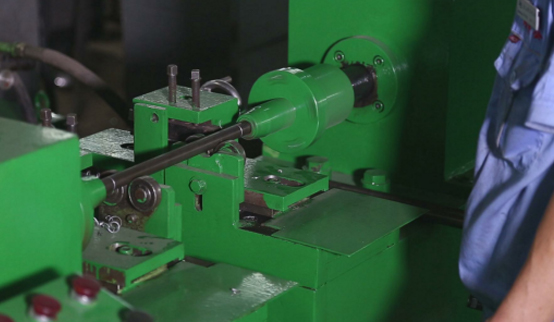 Afrikaans
Afrikaans  Albanian
Albanian  Amharic
Amharic  Arabic
Arabic  Armenian
Armenian  Azerbaijani
Azerbaijani  Basque
Basque  Belarusian
Belarusian  Bengali
Bengali  Bosnian
Bosnian  Bulgarian
Bulgarian  Catalan
Catalan  Cebuano
Cebuano  Corsican
Corsican  Croatian
Croatian  Czech
Czech  Danish
Danish  Dutch
Dutch  English
English  Esperanto
Esperanto  Estonian
Estonian  Finnish
Finnish  French
French  Frisian
Frisian  Galician
Galician  Georgian
Georgian  German
German  Greek
Greek  Gujarati
Gujarati  Haitian Creole
Haitian Creole  hausa
hausa  hawaiian
hawaiian  Hebrew
Hebrew  Hindi
Hindi  Miao
Miao  Hungarian
Hungarian  Icelandic
Icelandic  igbo
igbo  Indonesian
Indonesian  irish
irish  Italian
Italian  Japanese
Japanese  Javanese
Javanese  Kannada
Kannada  kazakh
kazakh  Khmer
Khmer  Rwandese
Rwandese  Korean
Korean  Kurdish
Kurdish  Kyrgyz
Kyrgyz  Lao
Lao  Latin
Latin  Latvian
Latvian  Lithuanian
Lithuanian  Luxembourgish
Luxembourgish  Macedonian
Macedonian  Malgashi
Malgashi  Malay
Malay  Malayalam
Malayalam  Maltese
Maltese  Maori
Maori  Marathi
Marathi  Mongolian
Mongolian  Myanmar
Myanmar  Nepali
Nepali  Norwegian
Norwegian  Norwegian
Norwegian  Occitan
Occitan  Pashto
Pashto  Persian
Persian  Polish
Polish  Portuguese
Portuguese  Punjabi
Punjabi  Romanian
Romanian  Russian
Russian  Samoan
Samoan  Scottish Gaelic
Scottish Gaelic  Serbian
Serbian  Sesotho
Sesotho  Shona
Shona  Sindhi
Sindhi  Sinhala
Sinhala  Slovak
Slovak  Slovenian
Slovenian  Somali
Somali  Spanish
Spanish  Sundanese
Sundanese  Swahili
Swahili  Swedish
Swedish  Tagalog
Tagalog  Tajik
Tajik  Tamil
Tamil  Tatar
Tatar  Telugu
Telugu  Thai
Thai  Turkish
Turkish  Turkmen
Turkmen  Ukrainian
Ukrainian  Urdu
Urdu  Uighur
Uighur  Uzbek
Uzbek  Vietnamese
Vietnamese  Welsh
Welsh  Bantu
Bantu  Yiddish
Yiddish  Yoruba
Yoruba  Zulu
Zulu Choosing the Right Idler Rollers for Efficient Belt Conveyor Performance
Idler Rollers for Belt Conveyors An Essential Component for Efficient Material Handling
Belt conveyors play a pivotal role in various industries, facilitating the smooth transportation of materials across different terrains. One of the critical components that ensure the effectiveness and efficiency of these systems is the idler roller. These rollers support the conveyor belt and material loads, significantly influencing the performance and longevity of the entire conveyor system.
What Are Idler Rollers?
Idler rollers are cylindrical components that serve as support for the conveyor belt. Positioned at regular intervals along the length of the conveyor, they bear the weight of the belt and the materials being transported. Idler rollers come in various designs and sizes, tailored to meet the specific requirements of different industrial applications.
Types of Idler Rollers
Idler rollers can be categorized based on their design and the load they are expected to carry. The most common types include
1. Crowned Rollers These rollers have a slightly raised center, which helps keep the belt aligned and prevent it from drifting off. They are ideal for operations where stability is crucial.
2. Flat Rollers These are the standard type of idler rollers, offering a simple profile for straightforward applications. They provide adequate support but are less effective at belt tracking than crowned rollers.
3. Impact Rollers Specifically designed to absorb shocks and impacts from heavy loads, these rollers often feature a rubber covering and are typically located near the loading sections of the conveyor.
4. Troughing Rollers These rollers are arranged at an angle, forming a 'trough' shape that helps in guiding bulk materials and preventing spillage, thus enhancing the efficiency of material handling.
The Importance of Idler Rollers
Idler rollers are not merely support structures but are crucial to maintaining the performance of belt conveyors. Their functions include
- Load Distribution They evenly distribute the weight of the materials across the conveyor belt, reducing stress and wear on both the belt and the rollers
.idler rollers for belt conveyors

- Belt Alignment Properly installed and maintained idler rollers help keep the conveyor belt aligned, preventing it from drifting, which can cause material spillage.
- Reducing Friction Efficient idler rollers minimize friction between the belt and the supporting surfaces, leading to smoother operations and lower energy consumption.
- Impact Absorption Rollers with impact-resistant designs protect the conveyor system against shocks and unexpected loads, contributing to longer service life.
Maintenance and Care
Regular maintenance of idler rollers is essential for ensuring the longevity and effectiveness of belt conveyors. Common practices include
- Inspection Routine checks for wear, misalignment, and damage can prevent significant issues later. Observing the condition of the rollers and belts can help identify problems early.
- Lubrication Keeping roller bearings well-lubricated reduces friction and heat buildup, which are common causes of premature wear.
- Replacement Over time, even the best idler rollers will wear out. It's crucial to replace them timely to avoid potential breakdowns and maintain efficient operations.
The Future of Idler Rollers
As industries strive for greater efficiency and sustainability, the design and manufacturing of idler rollers have evolved. Innovations such as lightweight materials, advanced bearing technologies, and eco-friendly designs are emerging, providing more durable and effective options for conveyor systems.
Conclusion
Idler rollers are an indispensable component of belt conveyors, impacting their efficiency, reliability, and overall performance. By understanding the different types of idler rollers and their importance, industries can make informed choices about their conveyor systems. Proper maintenance and investment in advanced technologies can further enhance operation capabilities, ensuring successful material handling across various sectors. The future of material transport does indeed hinge on the quality and efficiency of these often-overlooked yet vital components.
-
Revolutionizing Conveyor Reliability with Advanced Rubber Lagging PulleysNewsJul.22,2025
-
Powering Precision and Durability with Expert Manufacturers of Conveyor ComponentsNewsJul.22,2025
-
Optimizing Conveyor Systems with Advanced Conveyor AccessoriesNewsJul.22,2025
-
Maximize Conveyor Efficiency with Quality Conveyor Idler PulleysNewsJul.22,2025
-
Future-Proof Your Conveyor System with High-Performance Polyurethane RollerNewsJul.22,2025
-
Driving Efficiency Forward with Quality Idlers and RollersNewsJul.22,2025





























